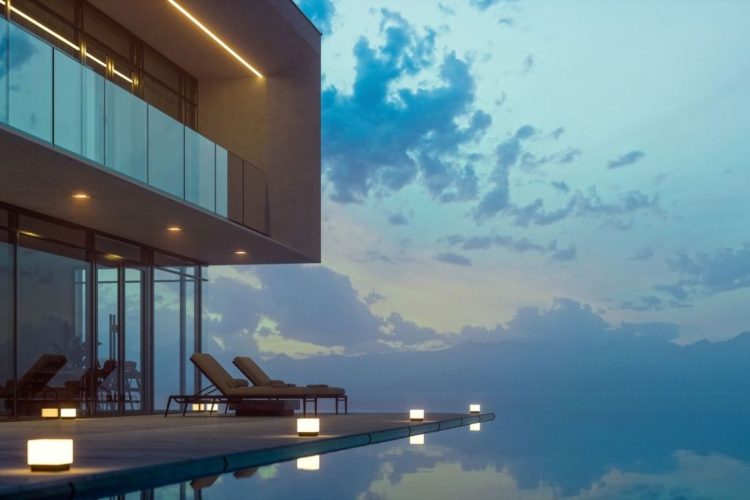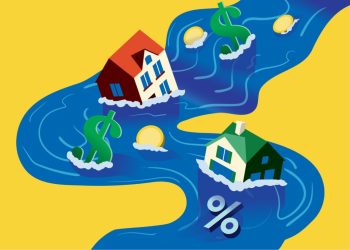Inflation and the rising cost of living have continuously impacted the real estate market. The latest Personal Consumption Expenditure (PCE) Index from the Bureau of Economic Analysis (BEA)—the Federal Reserve’s preferred gauge for inflation—shows that the PCE price index increased 0.3% in August, and increased to 2.7% year-over-year.
While inflation remains elevated, it doesn’t overwhelm expectations by experts. The lasting effects of high inflation for long periods of time is felt throughout most of the market, but it’s well-represented at the expensive end of the spectrum: high-end luxury real estate.
Luxury homes are thought to be a great achievement for buyers, but the margin for luxury is no longer synonymous with the value of million-dollar homes. Realtor.com®’s recent report highlights the changes in what we consider luxury to be.
According to Realtor.com, the “luxury threshold has climbed from about $797,000 in 2016 to $1.3 million today.” In order to match the same luxury status that $1 million offered nine years ago, homebuyers now need to spend closer to $1.6 million on listed properties.
The report uses listings on MLS platforms as of August 2025. Properties within the 90th percentile are considered entry-level luxury. Those within the 95th percentile are labeled as high-end luxury, and the 99th percentile—or those in the top 1% of most expensive homes—are ultra-luxury properties.
According to the report, listing prices for entry-level luxury homes are three times higher than the median U.S. home price of $439,450. High-end luxury homes are five times the national median, and ultra-luxury properties are 12 times higher than the national estimate.
Typically, listings around $1 million sat just below the top 5% most expensive homes in 2016, and were among the top 10% prior to the pandemic. But in just nine years, the entry-level luxury home price rose by more than 60%, jumping from nearly $797,000 in 2016 to $1.3 million today.
Danielle Hale, Realtor.com’s chief economist, said, “While a million-dollar home still represents an important benchmark, it’s not the luxury marker that it once was nationwide and in many markets.”
Realtor.com’s report defines entry-level luxury homes as those within the top 10% most expensive homes in the U.S. Nationwide estimates for the initial listing price on these homes falls just under $1.3 million. High-end luxury home prices—those within the top 5%—start at around $2 million. The top 1% are ultra-luxury homes, and a typical listing price for one in the U.S. is about $5.4 million.
But listing price varies greatly by region; some states have listing prices that far exceed the national average.
The report uses data from areas with at least 500 active million-dollar listings. The city with the highest starting point for entry-level luxury homes is Rifle, Colorado, at about $16.5 million.
Heber, Utah, comes in second at $6.8 million, followed by the Key West and Key Largo area of Florida at $4.5 million. Other metros ranked in the top 10 sit above $3 million as a starting point for entry-level luxury homes.
Although Colorado has the highest starting point, other states have more listings above $1 million. The report estimates that there are over 145,000 million-dollar homes listed nationwide, and just 10 metros account for more than a third of them.
The metro with the most million-dollar listings is the New York-Newark-Jersey City area, with nearly 12,000 listings spread between both New York and New Jersey. Nearly 34% of listings are above $1 million, and the starting point for entry-level luxury listings is about $2.9 million.
Ranking second is the Los Angeles-Long-Beach-Anaheim area of California. The area has fewer listings than New York at around 11,000, but it has the fourth highest starting point for entry-level luxury listings at nearly $4 million. Out of the top 10 metros with the most million-dollar listings, California stands out for having over 50% of all listings at or above $1 million.
Other cities in California are also within the top 10, including San Diego and San Francisco. While $1 million listings are no longer the basis for luxury, they still account for only 13% of all listings in the U.S. and remain a powerful psychological benchmark, according to the report.
“With or without a seven-figure price tag, luxury is often about exclusivity and relative standing in a local market,” Hale said. “In many areas a high-end home can rise many multiples above the area’s typical home price. Further, with a dramatic rise in home prices, Realtor.com data shows just how dramatically the definition of luxury has shifted over the past decade.”
For the full report, click here.











